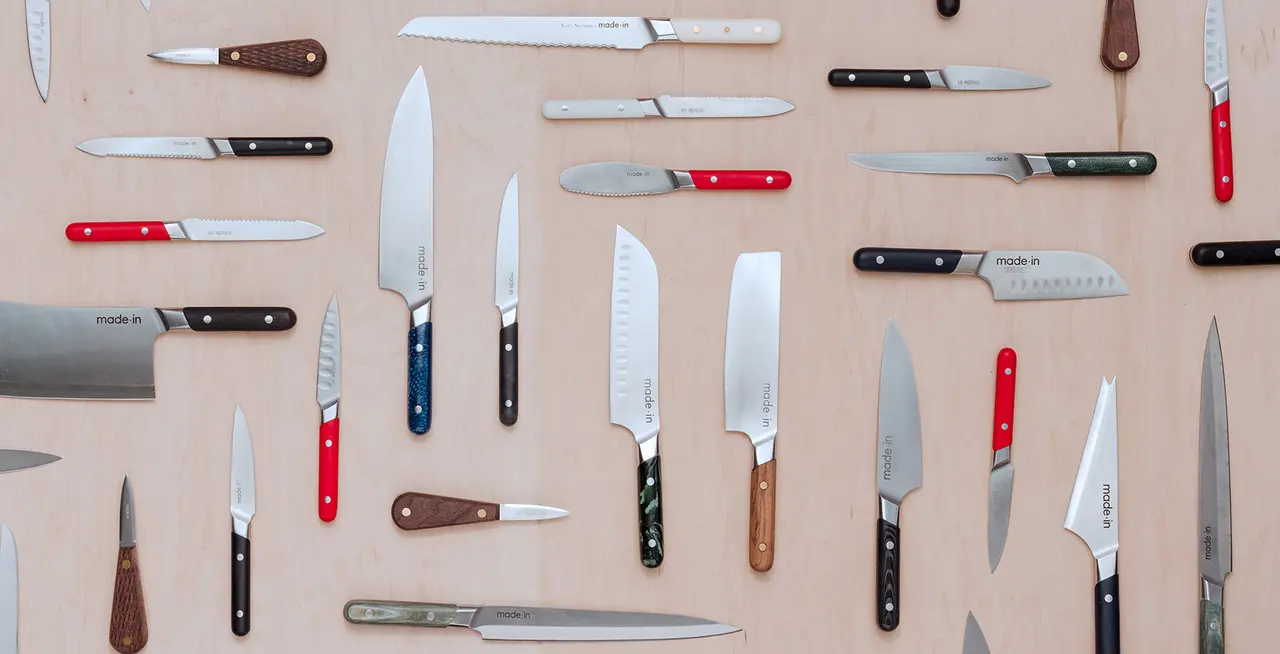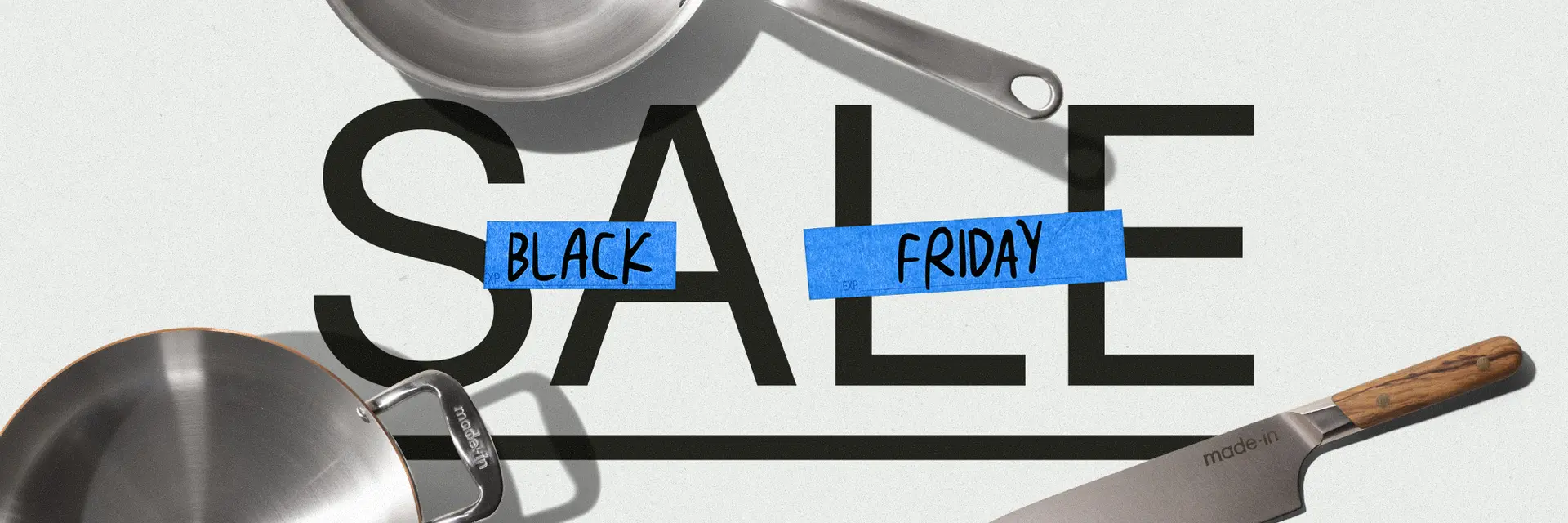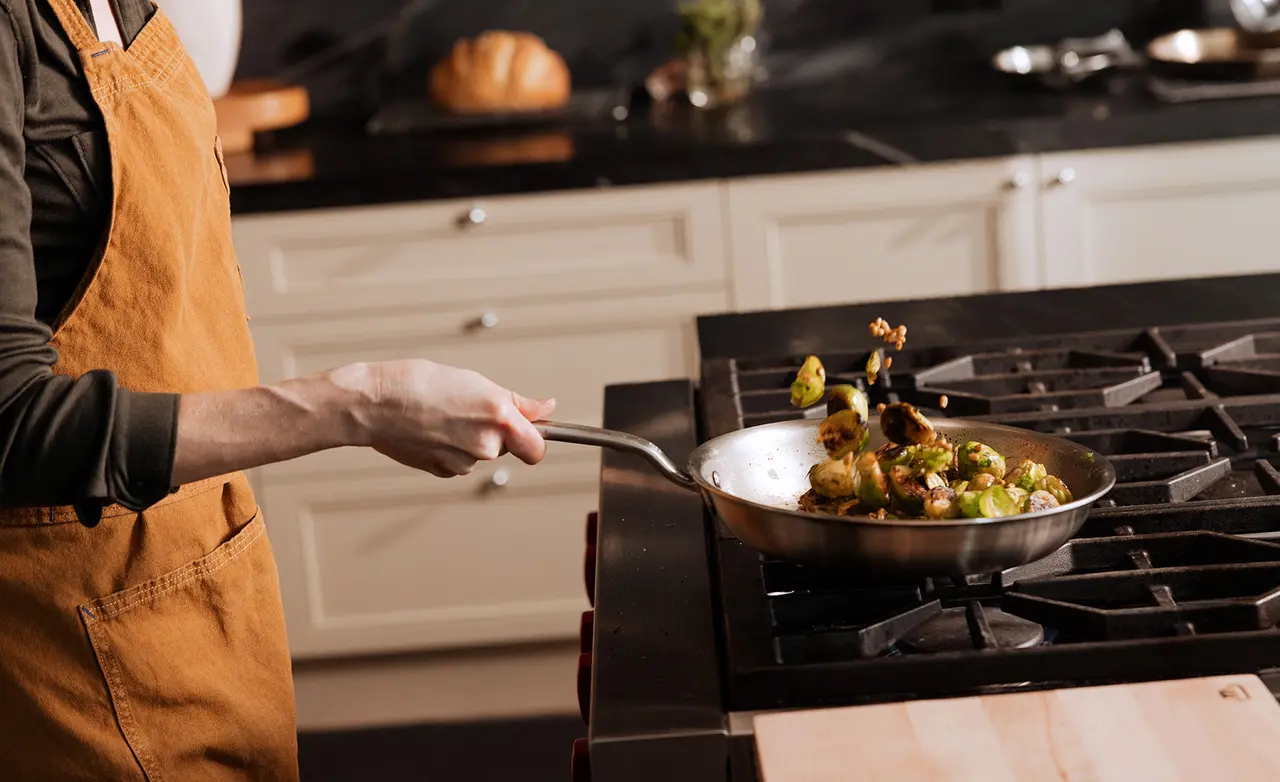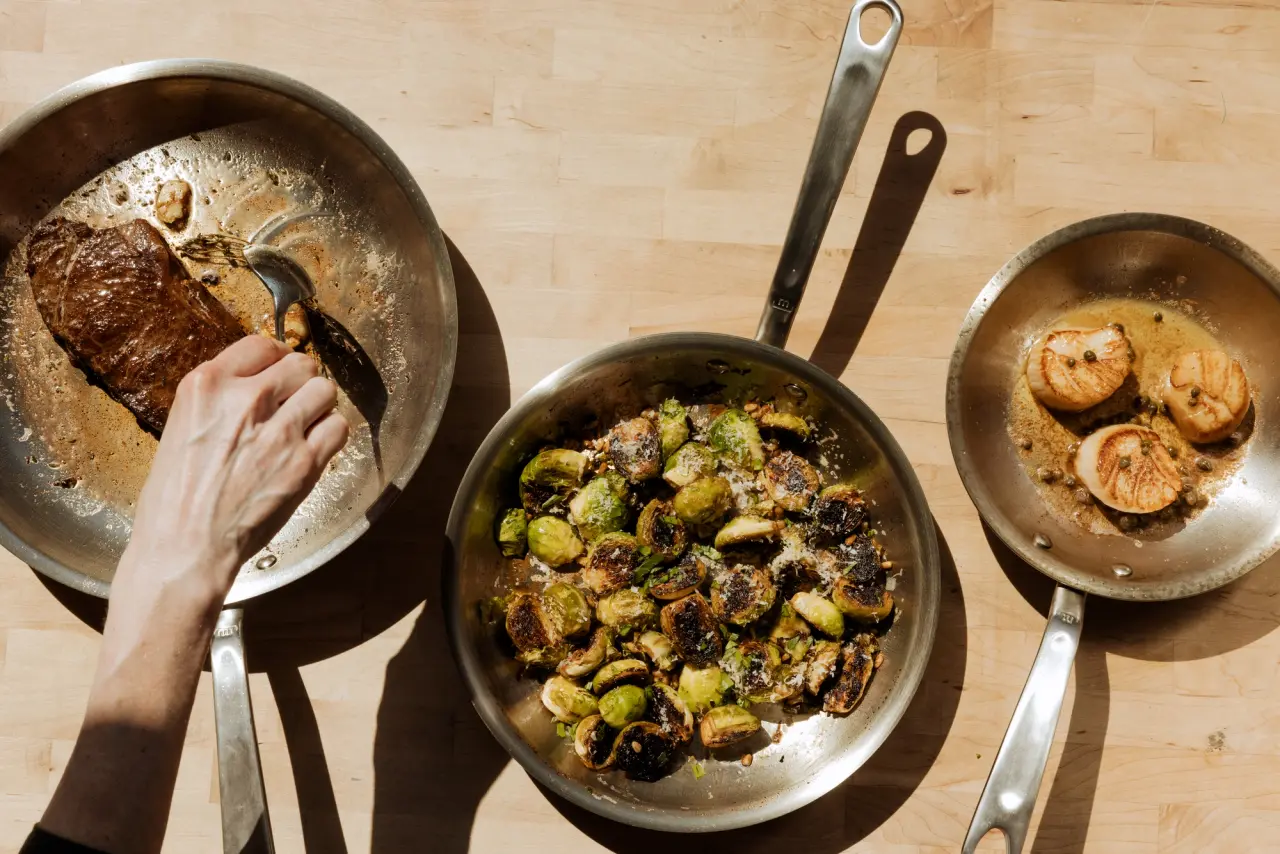From cheese knives to meat cleavers to blades designed especially for fileting fish, there’s truly no end to the breadth and variety of kitchen knives available to purchase. But where does that leave the novice home cook in terms of deciding which—and how many—knives to buy?
We’re here to whittle it down for you: in this guide, you’ll learn how to curate a home knife collection, from the basics (like the western-style chef knife) to the more speciality shapes (like the nakiri).
Essential Types of Kitchen Knives
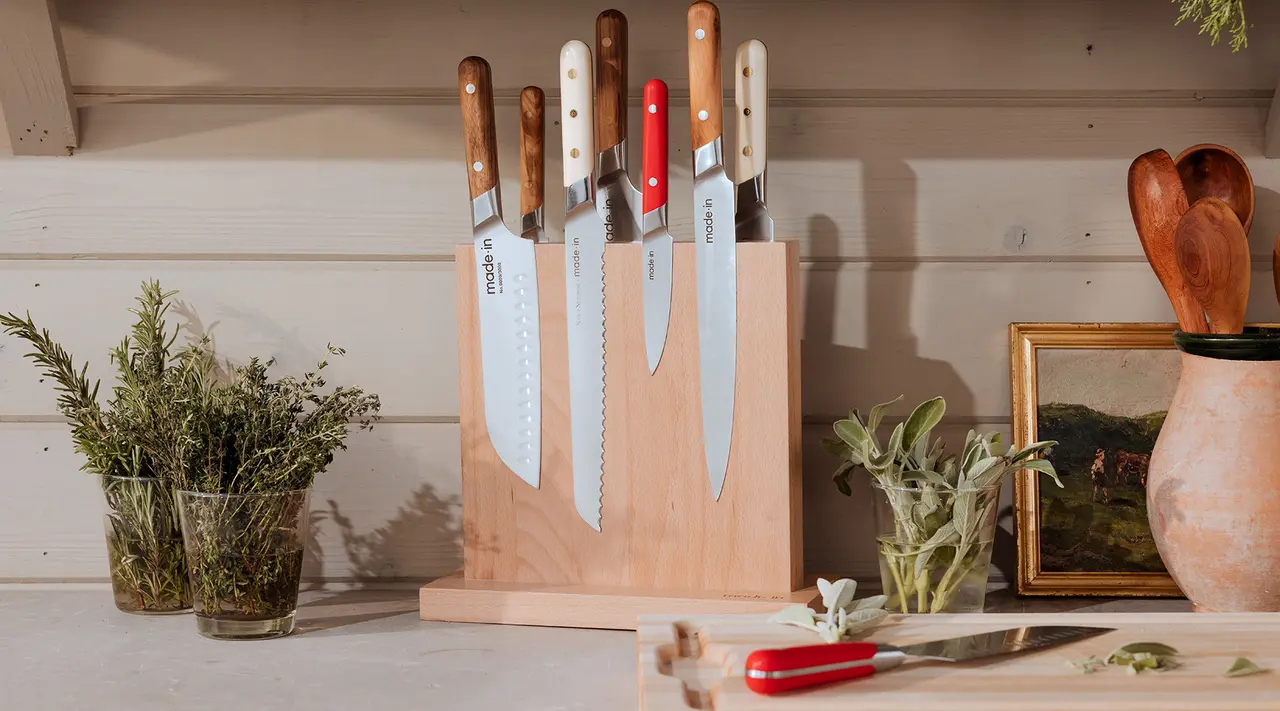
Unless you’re a certified knife collector, you don’t really need more than a few different blades. Here, we’ve listed the four most basic styles—the chef knife, the bread knife, the utility knife, and the paring knife—and why you need them. For the most part, these four cover your bases and provide an excellent foundation to build upon so you choose.
Bread Knife
Alternately called a serrated knife, a bread knife features a saw-like edge that helps to slice through crusty loaves with minimal drag, and without ruining the crumb structure. These knives are essential if you slice and eat a lot of bread, of course, though they work equally well for use on cakes, thick-skinned fruits like watermelon, and tomatoes.
Chef Knife
A chef knife is the first knife you should go out and buy when building your kitchen setup—and is likely what comes to mind when thinking about a kitchen knife. With a typical blade length of 6”to 8” and a long, curved edge, a chef knife tackles most—if not all—of your typical kitchen tasks, such as chopping vegetables, mincing garlic, and butchering whole chickens and fish.
Paring and/or Utility Knife
The utility knife (also known as a petty knife) is essentially a mini chef knife. Often around 5” long, it tackles many of the same tasks as the chef knife, while offering slightly more precision due its smaller size. You might use it to chop smaller vegetables like tomatoes, shallots, and garlic, slice meats and cheeses, or prepare delicate garnishes. A utility knife can even stand in for the smaller paring knife in many situations—though you may still want to buy both (especially if you have small hands).
What Other Knives Do You Need?
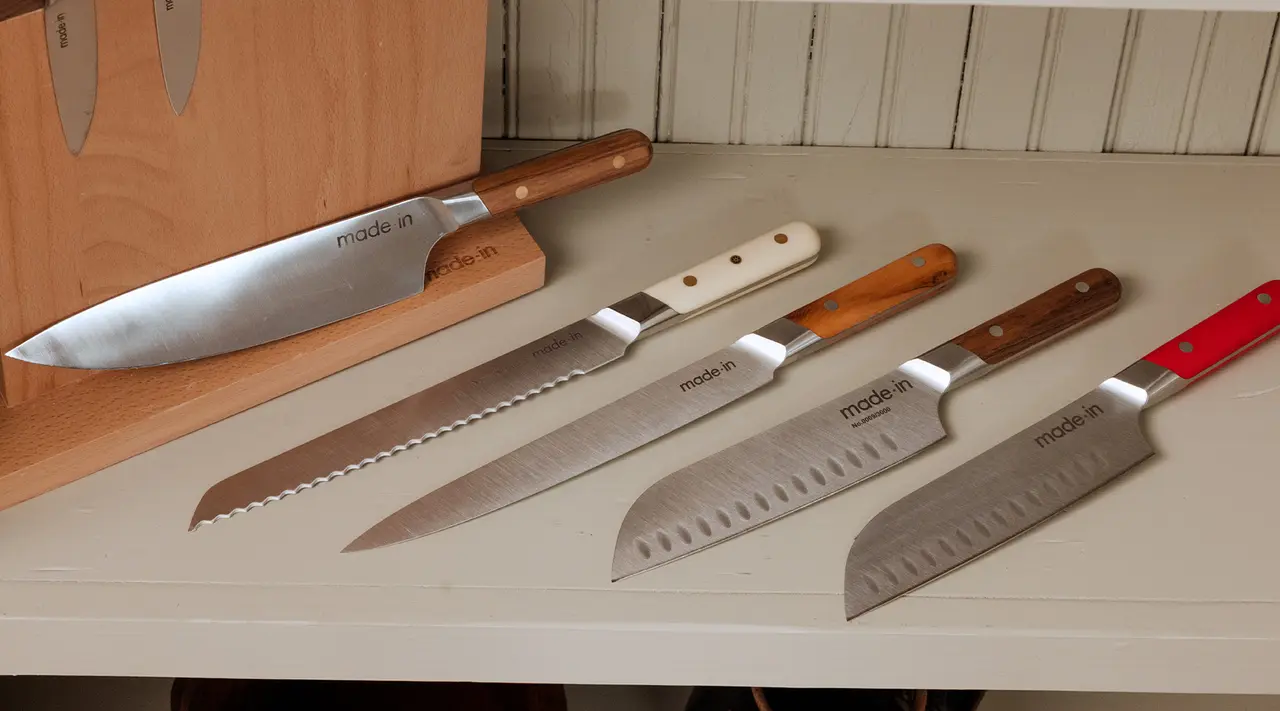
Once you’ve moved past the beginner stage and are ready to start building out your collection, there’s many more types of knives to consider—including slightly more specialized shapes. Here are some of our favorite, slightly more niche, blades.
Santoku Knife
This traditional Japanese flat-footed blade was originally designed to break down vegetables with precision and ease. While it certainly excels in that area, it’s also a pretty stellar stand-in for a western-style chef knife.
With its thin, extra-hard blade and flat edge, the santoku effortlessly slices through meat, fish, and poultry. It also features a fluted edge to prevent wet ingredients from sticking, which speeds up prep and makes it perfect for vegetables and fruits.
Nakiri Knife
The nakiri knife is a slightly less common style of knife, though one we still recommend to serious home cooks. This traditional Japanese knife looks like a small cleaver with a distinctive squared-off blade, and, like the santoku, is particularly suited to slicing vegetables (even thicker ones, like squash) due to its thin profile.
Meat Knife: Boning Knife, Cleaver, and/or Carving Knife
If you're regularly cooking with whole cuts of meat, it may be a good idea to invest in tools specifically designed to make cutting a protein easier. We recommend a boning knife, cleaver, and/or carving knife, depending on the type of meat you're working with (and how often you're cooking it).
Boning Knife
Breaking down whole chickens, pork shoulders, and fish is about as satisfying as it is economical. And while a chef knife or santoku is perfectly fine for the occasional deboning job, you may want to invest in a special knife if you do a lot of butchery. The boning knife features a long, flexible, skinny blade that helps it slip deftly between silverskin and flesh, cleanly separate the wings and thighs of a chicken, or filet delicate whole fish.
Cleaver
The cleaver is a larger blade intended for whole animal butchery, making quick, decisive work of meat and vegetables alike. Optimized for cutting close to the bone and through tough tendons, it's also perfectly suited for thick-skinned vegetables, crushing garlic, or even in lieu of a bench scraper when transferring ingredients from your cutting board.
Carving Knife
If you're regularly hosting holidays that feature a Rockwellian protein on the table, then it's likely time to invest in a carving knife to make smooth, precise cuts instead of delivering a hacked up, sawed-off slice to your relatives. Designed for this exact purpose, a carving knife may not be the most frequently used blade in your roster, but you'll be endlessly grateful for it when the need arises.
How to Decide How Many Knives You Need
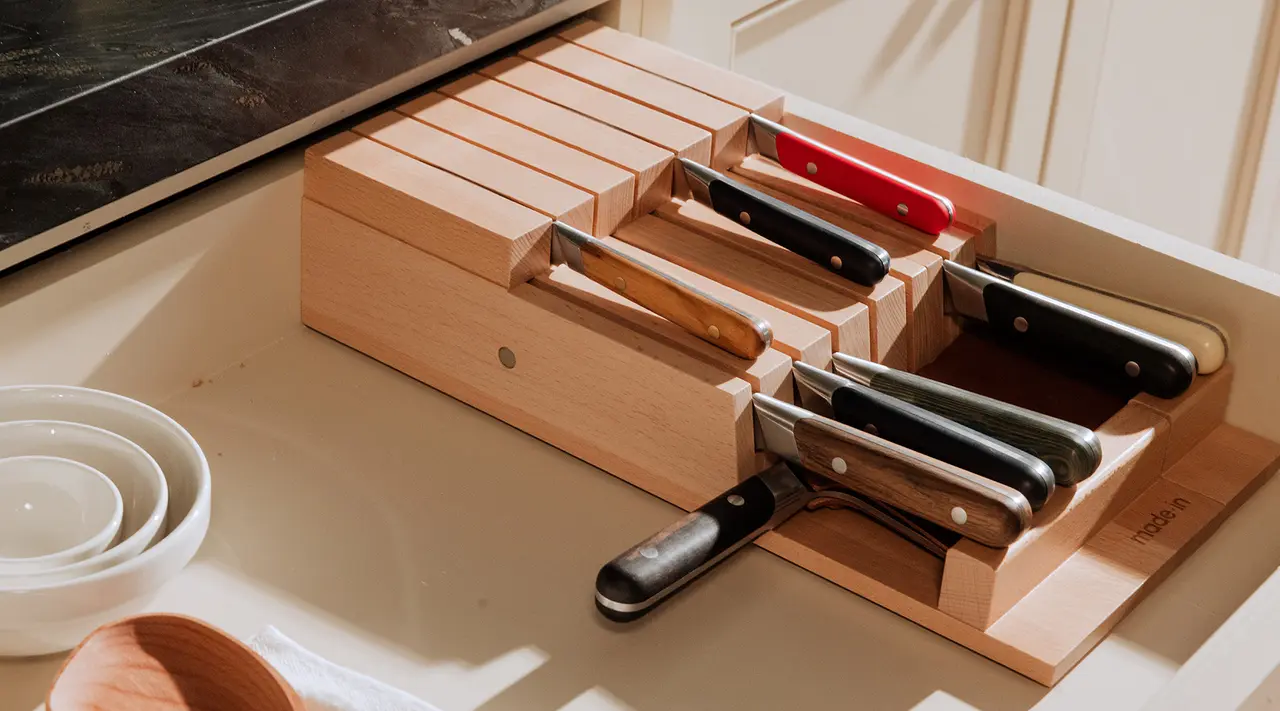
Like we mentioned earlier, the average home cook should have around four knives to start out with—a chef knife, a serrated or bread knife, and a paring and/or utility knife. If you’re just starting your collection, are on a budget, or are tight on kitchen space, we recommend buying a couple of high-quality knives, then gradually building your collection.
Ready to Shop?
No matter how many knives you collect, ensure they're high quality and durable enough to handle even the most demanding cutting job. Our full-tang, fully-forged, and French construction offers unmatched durability and blades that hold their edge for longer.
Whether you're in the market for one blade or a Set, our Knives are ready to fill the gaps in your collection. Shop now to see the difference chef-loved blades can made in your routine.
